- Product overview
- All features
- Latest feature release
- App integrations
- project icon Project management
- goal icon Goals and reporting
- asana-intelligence icon Asana AI
- workflow icon Workflows and automation
- portfolio icon Resource management
- my-task icon Admin and security
- list icon Personal
- premium icon Starter
- briefcase icon Advanced
- Small business
- Goal management
- Organizational planning
- Project intake
- Resource planning
- Product launches
- View all use cases arrow-right icon
- Help Center
- Asana Academy
- Certifications
- Work management hub
- Customer stories
- Get support
- Developer support
- Customer Success
- Project plans
- Team goals & objectives
- Team continuity
- Meeting agenda
- View all templates arrow-right icon
- Understanding the iterative process, wi ...

Understanding the iterative process, with examples

If you want to give the iterative process a try, this article is for you. We’ll walk you through how to define the iterative process, as well as how to implement this process on your own team.
See how you can superpower your operations
Transform overwhelm into opportunity when you align your teams, automate tracking, and make data-driven decisions. Do it all with ease and discover your path to operational excellence.
What is the iterative process?
The iterative process is the practice of building, refining, and improving a project, product, or initiative. Teams that use the iterative development process create, test, and revise until they’re satisfied with the end result. You can think of an iterative process as a trial-and-error methodology that brings your project closer to its end goal.
Iterative processes are a fundamental part of lean methodologies and Agile project management —but these processes can be implemented by any team, not just Agile ones. During the iterative process, you will continually improve your design, product, or project until you and your team are satisfied with the final project deliverable .
So what is a non-iterative process?
In a non-iterative process, you and your team would work together to come up with a final product without necessarily trying new ideas along the way. Typically, non-iterative processes require more time during the conceptualization and creation phase, so that everything works as intended during the testing phase.
Waterfall is the most common non-iterative process. In the waterfall model, you and your team will define project phases before the project starts. Each phase begins once a previous phase is completed in its entirety. Requirements and resources will typically be locked before a project begins, and the team avoids changing the project plan as much as possible.
For example, imagine you’re working with a design agency to create an ebook. You first need to provide all of the copy for the ebook. Then, the design agency will take that copy and create designs. Finally, your internal team will copyedit the designed ebook to make sure everything looks ok. This is an example of the waterfall model because each phase relies on the previous step (i.e. you can’t copyedit the designed ebook until it’s been designed).
Depending on the team you’re on and the type of projects you run, non-iterative processes can be challenging because they don’t build in time for your team to iterate and continuously improve. Because there are so many unknowns and surprises in engineering, engineering teams in particular tend to use iterative processes instead of non-iterative ones, but any team can benefit.
Is incremental design the same thing as iterative processes?
Most teams use incremental design and iterative processes interchangeably, and in practice, they often go hand-in-hand. But there is a difference between the two terms.
In an iterative process, your team works to refine and improve your project based on feedback or new information. The key to the iterative process is trial and error: the project gets better over time as a result of these changes.
In incremental design—sometimes called incremental development—you will add new features and build better things on top of your first version or deliverable. To run an incremental design process, teams will purposefully produce a bare-bones version of their ultimate project deliverable in order to get it out the door as quickly as possible (like Facebook’s old mantra—move fast and break things). Then, the team will iterate and improve upon the initial version by creating increments that include more features than the initial version. They will continue to do so until their deliverable has all of the functionality it needs to have.
Most teams that use iterative processes use incremental design and vice versa. Good iterative processes are also incremental so that you can continuously improve on your original deliverable. Good incremental design is also iterative because you need to be able to respond to customer feedback and pivot if necessary.
Example iterative processes
Engineering.
Many engineering teams use the iterative process to develop new features, implement bug fixes, or A/B test new strategies. Often, an engineering team will create a few iterations that they think are equally promising, then test them with users. They’ll note pain points and successes, and then continue building out the one that tested the best.
Product development
You might be surprised to realize that most product development is very iterative. Think of any personal technology you’ve ever purchased for yourself—there was likely a previous version before the one you bought, and maybe a version afterwards, as well. Think of the development of mobile phones throughout the years, how speakers have gotten smaller and more portable over time, or even the way refrigerators from the same brands have changed to adapt to new family needs. All of these are iterative processes.
Some marketing teams embrace iterative processes, others not so much. But to a certain extent, a lot of marketing is iterative. For example, some marketing teams might test different advertising copy to see which one gets better engagement, or send out two versions of an email newsletter to compare click-through rates. Alternatively, a brand marketing team could use iterative design processes to identify the imagery that works best for their target audience.
Though most of a sales team’s customer-facing work isn’t iterative, some of their tasks can benefit from iterative processes. For example, a sales team might take an iterative approach to sending cold emails. They might have their reps send a few different email subject lines and analyze the results. Then, the team can implement the most successful subject lines moving forward.
The 5 steps of the iterative process
The iterative process can help you during the lifecycle of a project. During the steps of the iterative process, your goals and requirements will serve as the project’s starting point. Then, your team will use testing, prototyping, and iteration to achieve the best possible result. Here’s how:
1. Planning and requirements
During this step in the iterative process, you will define your project plan and align on your overall project objectives . This is the stage where you will outline any hard requirements—things that must happen in order for your project to succeed. Without this step, you run the risk of iterating but not hitting your goals.
2. Analysis and design
During this step, you and your team will focus on the business needs and technical requirements of your project. If step one was the process of outlining your goals, step two is when you brainstorm a design that will help you ultimately hit those goals.
3. Implementation
During the third step, your team will create the first iteration of your project deliverable . This iteration will be informed by your analysis and design, and should work to hit your ultimate project objective. The level of detail and time you spend on this iteration will depend on the project.
Now that you have an iteration, you will test it in whatever way makes the most sense. If you’re working on an improvement to a web page, for example, you might want to A/B test it against your current web page. If you’re creating a new product or feature, consider doing usability testing with a set of potential customers.
In addition to testing, you should also check in with your project stakeholders . Ask them to weigh in on the iteration, and provide any feedback .
5. Evaluation and review
After testing, your team will evaluate the success of the iteration and align on anything that needs to change. Does this iteration achieve your project objectives? Why, or why not? If something needs to change, you can restart the iterative process by going back to step two to create the next iteration. Keep in mind that your initial planning and goals should remain the same for all iterations. Continue building upon the previous iteration until you get to a deliverable you’re happy with.
If you restart the iterative process, make sure everyone is still aligned on your project goals. The iterative process can take weeks or months, depending on how many iterations you run through. Centering your iteration on your project objectives every time you restart the iterative process can help you ensure you don't lose track of your north star.
The benefits and challenges of the iterative process
The iterative model isn’t right for every team—or every project. Here are the main pros and cons of the iterative process for your team.
Increased efficiency. Because the iterative process embraces trial and error, it can often help you achieve your desired result faster than a non-iterative process.
Increased collaboration. Instead of working from predetermined plans and specs (which also takes a lot of time to create), your team is actively working together.
Increased adaptability. As you learn new things during the implementation and testing phases, you can tweak your iteration to best hit your goals—even if that means doing something you didn’t expect to be doing at the start of the iterative process.
More cost effective. If you need to change the scope of the project, you’ll only have invested the minimum time and effort into the process.
Ability to work in parallel. Unlike other, non-iterative methodologies like the waterfall method, iterations aren’t necessarily dependent on the work that comes before them. Team members can work on several elements of the project in parallel, which can shorten your overall timeline.
Reduced project-level risk . In the iterative process, risks are identified and addressed during each iteration. Instead of solving for large risks at the beginning and end of the project, you’re consistently working to resolve low-level risks.
More reliable user feedback. When you have an iteration that users can interact with or see, they’re able to give you incremental feedback about what works or doesn’t work for them.
Increased risk of scope creep . Because of the trial-and-error nature of the iterative process, your project could develop in ways you didn’t expect and exceed your original project scope .
Inflexible planning and requirements. The first step of the iterative process is to define your project requirements. Changing these requirements during the iterative process can break the flow of your work, and cause you to create iterations that don’t serve your project’s purpose.
Vague timelines. Because team members will create, test, and revise iterations until they get to a satisfying solution, the iterative timeline isn’t clearly defined. Additionally, testing for different increments can vary in length, which also impacts the overall iterative process timeline.
Try, trial, and try again
Ultimately, every team can learn something from the iterative process. When possible, approach work with a trial-and-error mentality. When in doubt, lean into flexibility and collaboration. And—whether or not you implement the iterative method—always strive for continuous improvement in your work.
For more tips, read our article on 25 essential project management skills .
Related resources
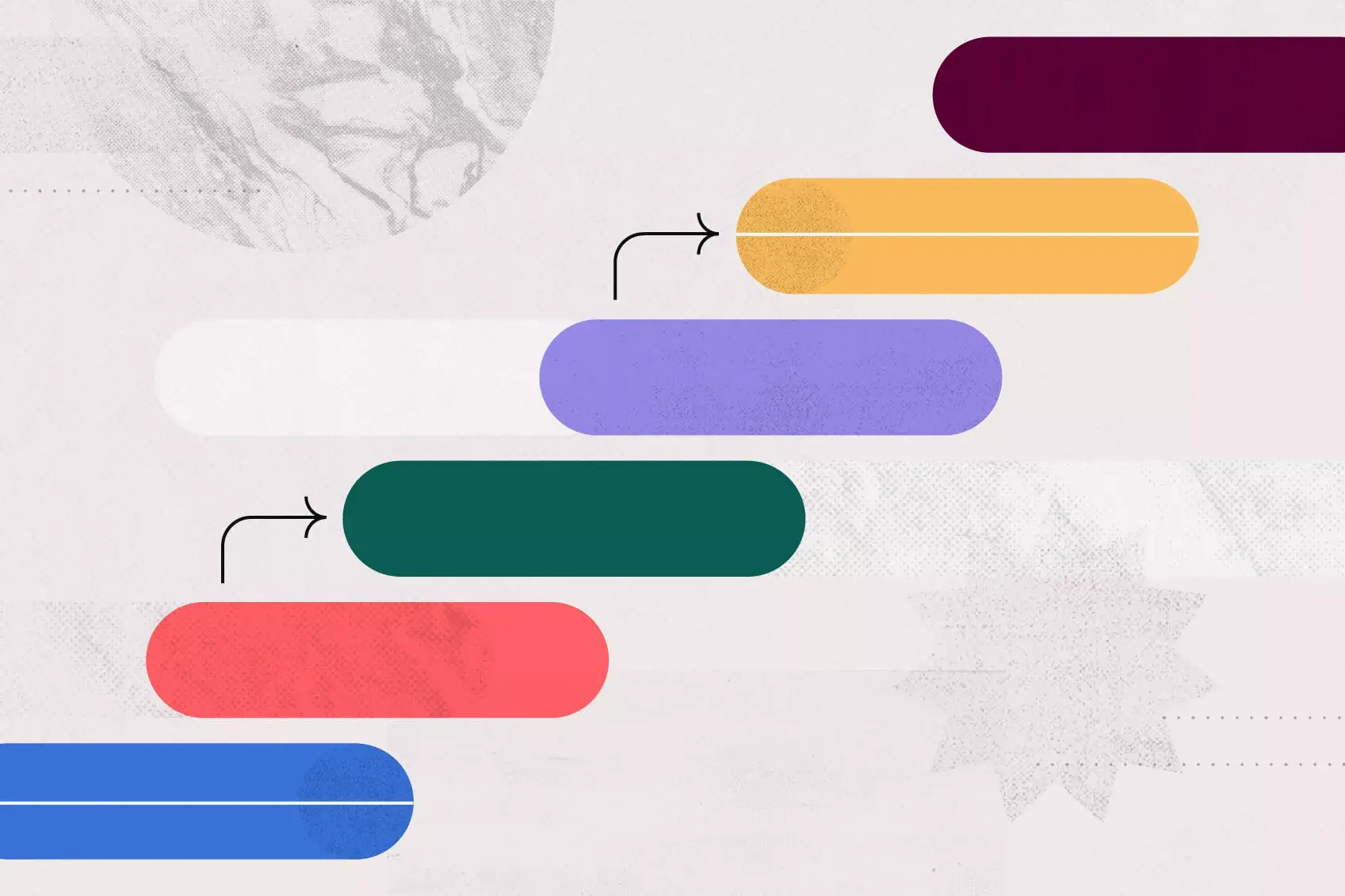
Product development process: The 6 stages (with examples)
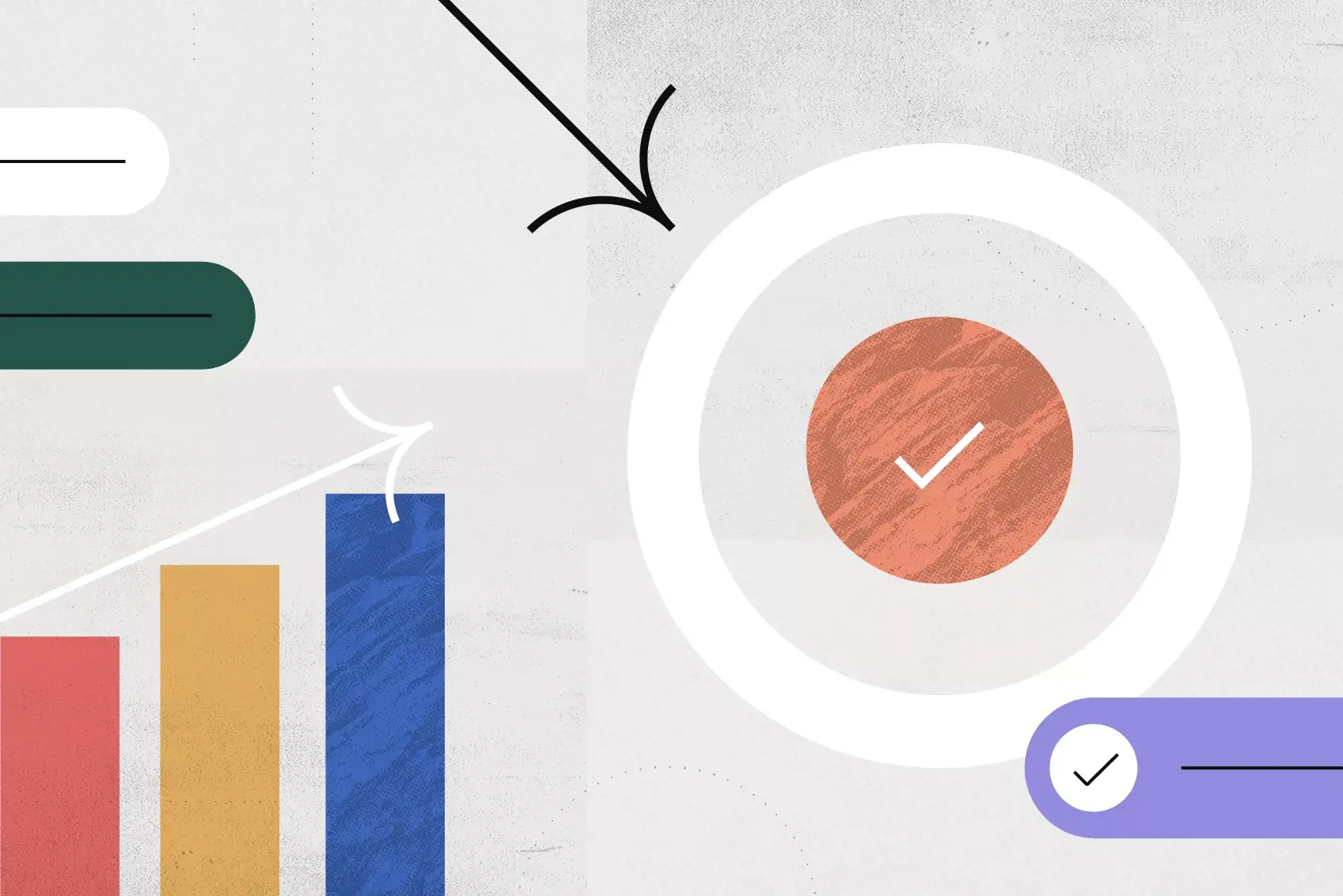
What is a product backlog? (And how to create one)
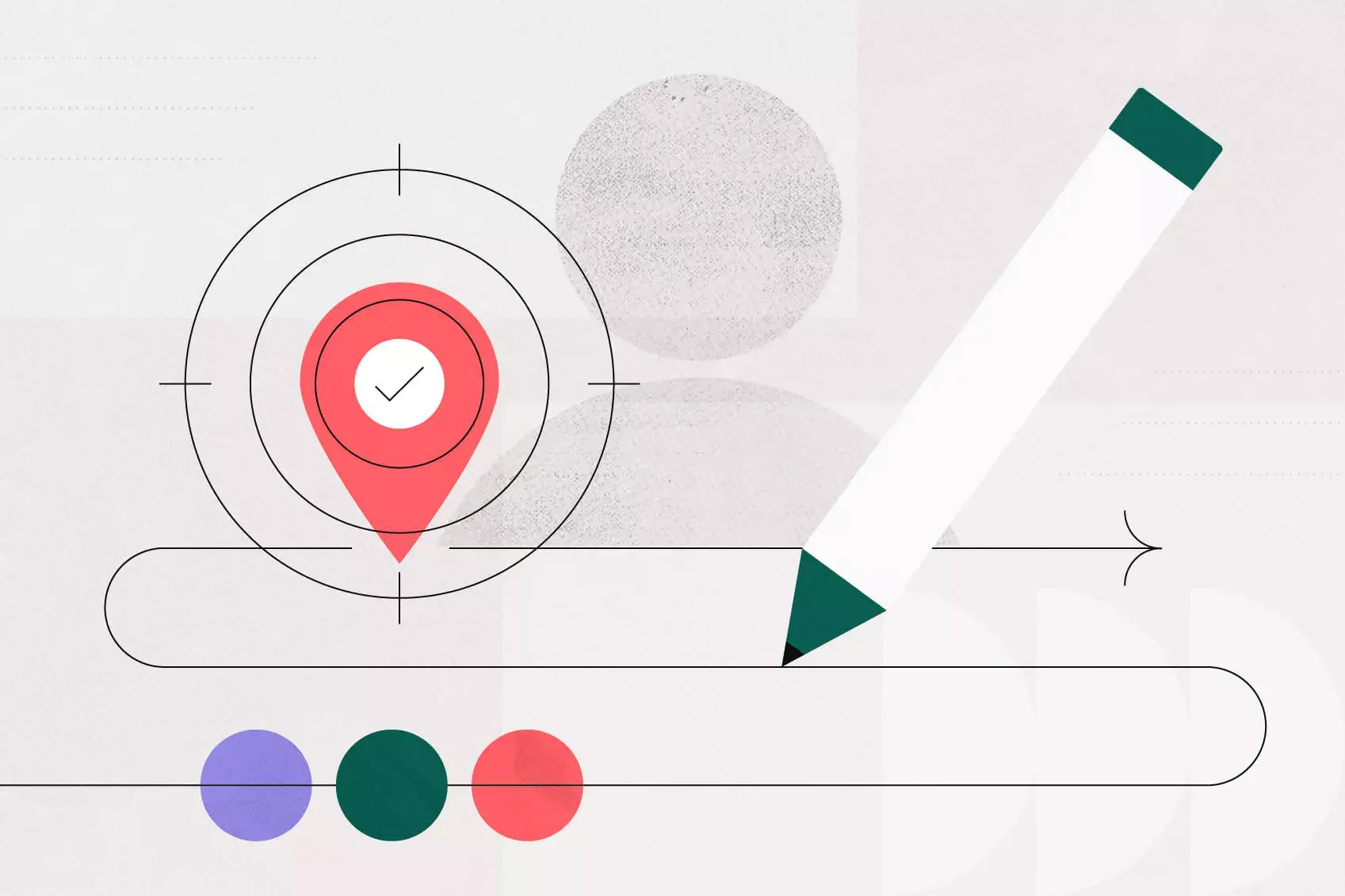
User stories: 3 examples to drive user value
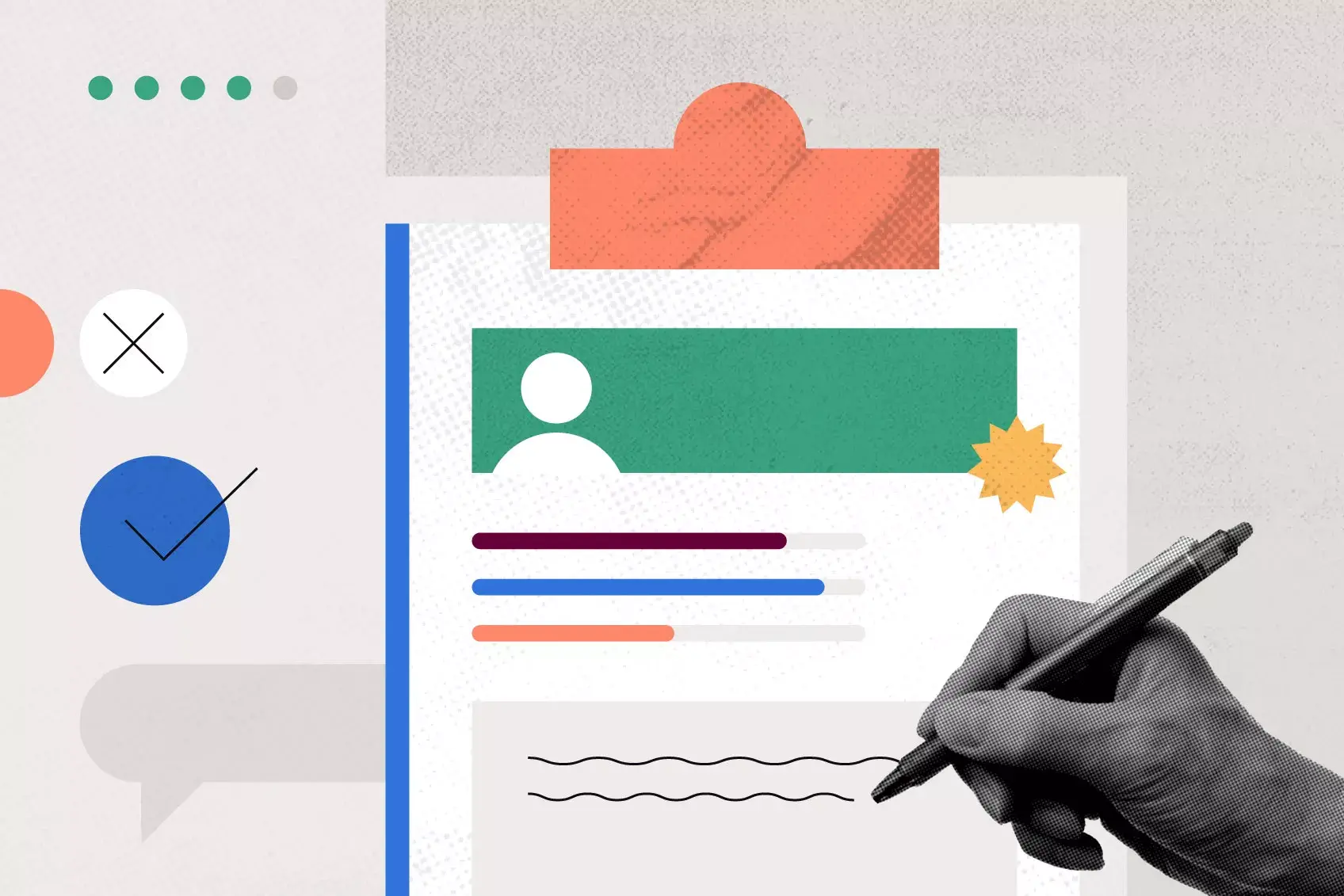
Everything you need to know about requirements management
Transform teamwork with Confluence. See why Confluence is the content collaboration hub for all teams. Get it free
- The Workstream
- Project management
- Iterative process
Understanding the Iterative Process
Browse topics.
The mobile phone. The personal computer. The digital camera. Teams built these products’ very first models from the ground up using iterative processes because they had no clear vision of what features customers would be willing to pay for. They had to test multiple possibilities and figure out what worked. By using the iterative process’s cyclical nature, these teams were able to build prototypes into ground-breaking innovations.
This is the value of the iterative process: it allows teams to repeat cycles of work and continuously improve their output using stakeholder feedback from previous versions. With enough iterations, it’s possible to polish a rough minimum viable product into a crowd-pleasing hit product that takes the world by storm.
This guide will define the iterative process, how companies can benefit from it, and the steps to take to build world-class iterative processes that elevate work.
What is the iterative process?
The iterative process is a cycle of repeated work that a team creates to quickly prototype their product and get feedback from customers and stakeholders. The team then uses this feedback to improve the product in the next work cycle and repeats this process until they achieve the desired outcome.
Another way to define the iterative process is by looking at what it’s not. It’s not a linear or sequential process. It’s not a rigid, inflexible process that stays the same each time a team completes it. On the contrary, the iterative process is a flexible, cyclical way of working. Team members collaborate and solve problems, ultimately enhancing the product using data they’ve gleaned from previous cycles.
Benefits of using iterative processes
Tackling complex problems and completing massive projects is easier with the right framework for continuous improvement . This is why iterative processes and prototyping are beneficial for certain teams. Some of these benefits include:
Faster time to market
There’s an advantage to being able to quickly test and quickly fail: You gain data on what works at a faster pace, which means you can move toward product launch at a faster pace. With a decreased time to market, your team can use iterative processes to improve efficiency in execution.
Risk mitigation
Working in iterations helps the team identify risks early on. Testing a prototype will bring market realities to light and show whether you’re meeting your customers’ needs. If customer feedback is negative, a quick pivot can mitigate risk and save your team from potentially investing resources in features customers don’t want.
Continuous improvement
The basic tenet of working in iterations is continuous improvement. You test the prototype and use the feedback to enhance the product for the next cycle. You keep testing the next prototypes and keep learning with each cycle until you get the desired outcome: a product that customers need and are willing to pay for. Sequential processes won’t give you the ad hoc, on-the-go improvement that iterative processes offer.
Lower costs
One advantage of iterative development is that it can lead to cost savings. Gathering customer feedback on each prototype makes it possible to spot costly errors early on and direct resources toward features your target audience truly needs.
For example, a mobile app development team could discover from an early prototype that their target audience wants corporate collaboration tools more than a built-in social network feed in the app. By identifying this need early on, the team can focus time and resources on building those collaboration tools only.
Flexibility and adaptability
Another major advantage of an iterative process is its flexibility. When dealing with changing requirements, iterative cycles allow product teams to incorporate user feedback into future versions, adapting to customer needs or market trends. This adaptability is absent from non-iterative processes that are fixed in scope and linear in execution.
Steps in the iterative process
To create an efficient iterative process that improves your products and brings you closer to business objectives, you need to get on the same page as your team. No process is universal, as each team has a different way of executing them. The best way to align the process is to use Confluence to map out and clarify the details of each step.
An iterative process involves five stages:
Begin by setting your goals and objectives for the project at hand. What do you want to achieve, what milestones do you need to reach, and by when?
Next, identify the stakeholders—all those whose decisions will shape the work. Planning involves breaking down a complex project into smaller iterations and outlining each scope so the work is clear to all team members.
In the design phase, you need to develop a solution for the current iteration. Will you achieve the goal of this work cycle by building a prototype, conducting research, or enhancing existing features? Part of this stage involves defining which metrics or KPIs to use to measure the success of this iteration.
Implementation is where the rubber meets the road, and you execute all your plans. Often, this means the building of a prototype or the development of a feature. At this stage, getting feedback from stakeholders is key to the product’s continued improvement. There will be future cycles until the successful launch, so every bit of information can feed into the evolution of the work.
Evaluate and test
In the evaluation and testing stage, you determine if the iteration meets its objectives. Does it pass quality standards? Do customers rate it favorably? As always, your analysis involves identifying areas for improvement. You need to test your solution for quality and effectiveness. If this cycle of work meets the goals and standards, then the next iteration becomes easier.
Iterate and improve
The stage after testing involves using the testing information and stakeholder feedback that you’ve gathered throughout the iteration to inform the next cycle of work. A critical assessment of the previous work will lead to adjustments to your plan, design, objectives, and scope. If you do this well, the next iteration should continue to enhance your product.
This is the last step of the iterative process but not the last step of your work. Here, you repeat the entire cycle from the top and continue until you reach the desired outcome.
Examples of iterative processes
When do you use these iterative processes? They work best for projects where requirements or customer needs are always changing, and the project scope has to be fluid to answer those needs. Iterative processing allows the work to evolve with each new cycle, contributing to the continuous improvement of the product.
Some examples of iterative processes include:
- Agile project management : This method involves breaking down software creation into short sprints , which involve frequently delivering and testing individual features. This includes incorporating feedback from users and stakeholders into each subsequent sprint, leading to a cycle of continuous improvement as the team works toward a final product.
- A/B testing: This technique is prominent in marketing and product development and involves testing two or more versions of an element (e.g., an email subject line or app feature) to see which performs better with customers. After implementing the winning version, you can repeat this iterative process to optimize other elements of the product or marketing campaign elements.
- Scrum : This Agile methodology for project management allows teams to work in fixed-length sprints. With each sprint, a Scrum team delivers a working version of the product (the minimum viable product), and by using reviews and retrospectives , the team continuously improves the product with each sprint.
- Kanban : Kanban is a project management method that visualizes work as cards on a Kanban board to limit the amount of work in progress and achieve an efficient flow. Like other Agile frameworks, Kanban is an iterative process. It works in sprints, and team members continually try to improve and enhance the product. Whichever side your team leans in the Kanban vs. Scrum debate, they’re both iterative processes and share all the advantages of an Agile methodology.
- Lean project management : The Lean methodology is a set of principles that seek to eliminate waste and always add value. Within project management, lean principles aim to make projects more efficient by taking out activities or tasks that don’t add value or delay the final outcome. How is this an iterative process? The Build-Measure-Learn cycle forms the basis of Lean project management. With each iteration, the team builds a part of the project, measures its effectiveness through feedback and data, and uses those learnings to improve the project on the next iteration.
Challenges of the iterative process
While iterative processes are beneficial, they involve common challenges that bring an element of risk to your projects. Some common challenges include:
Scope creep : With the team being in a constant state of experimentation and testing, you may increase project scope. All these new requirements could cause delays or unexpected budget increases and pose a risk to completing the work. To keep this in check, ensure that the planning phase of every iteration includes a scope definition to help the team focus on the priorities of each work cycle.
Stakeholder expectations : Stakeholders have a say in how the product progresses because they’re end users or project owners. But, part of the process is learning to manage their expectations by explaining how the iterative process works and defining success metrics and timelines. Keep communication lines open and show the stakeholders you’re listening to their feedback—after all, their comments and suggestions will shape the future of the product.
Resistance to change : Not everyone will be on board with an iterative process, particularly with new team members. You need to manage this resistance to change by proactively explaining the benefits of the iterative process and being transparent about the successes and challenges. Managing this resistance boils down to communication—with the right amount, you can get people on the same page.
Improve your iterative processes with Confluence
When it comes to iterative processing, there’s no better platform for enhancing collaboration and creating iterative workflows than Confluence.
Confluence is a unifying platform for completing work in your company. It brings your teams together in a shared workspace to move projects forward. Teams create and share ideas and tasks, giving stakeholders a single source of truth on project status and providing a centralized area for storing everything from project plans to company policies.
How does Confluence help you manage iterative processes? You can store all project plans and timelines there. When an iteration is complete, use Confluence to document and store all learnings so you can use them to propel the project in the next cycle. Keep stakeholders informed of project progress or ask for feedback using Confluence’s communication tools and make every iteration a success.
Try Confluence
The iterative process: Frequently asked questions
Why are failures important in iterative processes.
Iterative processes allow teams to experiment with new features or products and gather data that directs their way forward. Product teams can test theories quickly and use their learning to enhance their output. Failures allow the team to learn from mistakes early on and pivot to improve a product or feature that customers truly need. Without failures to dispute previously held beliefs, the team cannot improve their product or workflow.
What is a non-iterative process?
A non-iterative process is linear in the way it progresses from start to finish. There are no cycles of repetition as with iterative processes, as each step in the work is sequential and occurs only once, with each step leading to the next. The process is inflexible and rigid, so non-iterative processes are more suitable to projects with a well-defined scope, where the requirements never change, and efficiency is a key factor. Some industries where non-iterative, sequential processes are crucial include manufacturing, construction, waterfall software development , and food processing.
What tools are associated with iterative processes?
As with any process or methodology, there are numerous tools associated with iterative processes, each catering to a specific industry or type of work. However, some general categories of tools include project management tools, such as Confluence and Jira. Due to the customizable nature of the Atlassian platform, you can tailor both Confluence and Jira to fit the iterative process of any team, and they remain flexible tools for cyclical work in any industry.
You may also like
Project poster template.
A collaborative one-pager that keeps your project team and stakeholders aligned.

Project Plan Template
Define, scope, and plan milestones for your next project.
Enable faster content collaboration for every team with Confluence
Copyright © 2024 Atlassian
Ask a question
Start a discussion.
- Atlassian logo Jira Product Discovery
- Jira Service Desk Jira Service Management
- Confluence Confluence
- Trello Trello
- Atlassian logo Atlassian Guard
Community resources
- Announcements
- Documentation and support
Atlassian Community Events
- Atlassian University
- groups-icon Welcome Center
- groups-icon Featured Groups
- groups-icon Product Groups
- groups-icon Regional Groups
- groups-icon Industry Groups
- groups-icon Community Groups
- Learning Paths
- Certifications
- Courses by Product
- Live learning
- Local meet ups
- Community led conferences

Get product advice from experts

Join a community group

Advance your career with learning paths

Earn badges and rewards

Connect and share ideas at events
- Featured Groups
What is an iterative approach and what are its benefits?
Recommended Learning For You
Level up your skills with Atlassian learning
Visualizing Work Across Teams with Plans in Jira Software
Learn how to use Plans to accurately map your team’s work and make better recommendations.
The Beginner's Guide to Agile in Jira
This course has everything you need to get started with agile and Jira Software.
Atlassian Certified Associate
Jira Software Board Configuration
Earn an associate-level credential from Atlassian that shows you can effectively configure Jira Software boards.
Was this helpful?
Andreas Springer _Actonic_
About this author
Head of Marketing
Actonic GmbH
2 accepted answers
205 total posts
- +26 more...
- Community Guidelines
- Privacy policy
- Notice at Collection
- Terms of use
- © 2024 Atlassian
Iterative Model in SDLC: An In-Depth Look

By Abhay Talreja
My latest article - Empirical Process Control - The Key to Agile Success
In this article, we'll dive deep into one of the most popular Software development life cycle (SDLC) model - The Iterative model, a popular approach to software development that focuses on incremental improvements and frequent feedback. We'll explore the advantages and disadvantages of the iterative model, its relationship with the triple constraint, and how it compares to other SDLC models.

Table of Contents
Introduction to the iterative model, advantages of the iterative model, disadvantages of the iterative model, iterative model and the triple constraint, comparing the iterative model to other sdlc models, presentation used in the video.
- Frequently asked questions
The iterative model is a software development approach that involves breaking a project into small, manageable iterations. Each iteration is a self-contained mini-project that results in a working version of the software. The development team then uses feedback from stakeholders to refine and improve the product in subsequent iterations. This process continues until the final product meets the desired requirements.
- Flexible and adaptable : The iterative model can easily accommodate changes in requirements as the project progresses, making it ideal for projects with evolving or uncertain requirements.
- Early feedback and validation : Stakeholders can provide valuable feedback early in the development process, ensuring that the final product aligns with their needs.
- Risk reduction : By addressing high-risk or complex features early in the development process, the iterative model helps to reduce project risk.
- Easier project management : With smaller, more manageable iterations, project management becomes more straightforward and less overwhelming.
- Improved quality : Frequent testing and feedback allow developers to identify and fix issues more quickly, leading to a higher-quality final product.
- Requires disciplined planning : The iterative model demands careful planning and organization to manage iterations and ensure that the project stays on track.
- Less predictable timeline : It can be challenging to predict the exact number of iterations required to complete the project, making it difficult to estimate the project's completion date.
- Requires frequent communication : The iterative model relies on constant communication between team members and stakeholders, which can be time-consuming and challenging to manage.
- Potential for scope creep : The flexibility of the iterative model may lead to scope creep if stakeholders continue to request changes or additions throughout the development process.
Table 1: Advantages and Disadvantages of The Iterative Model in the Software Development Life Cycle (SDLC)
The triple constraint refers to the three primary factors that determine the success of a project: scope, time, and cost. In the iterative model, these factors are interrelated and must be carefully balanced to ensure project success. The flexible nature of the iterative model allows for adjustments to the scope as the project progresses, but this may affect the overall time and cost of the project.
The iterative model has its unique advantages and disadvantages, which set it apart from other SDLC models, such as the waterfall and agile models.
Iterative vs. Waterfall Model
The waterfall model is a linear approach to software development, where each phase is completed before moving on to the next. The iterative model, on the other hand, involves repeated cycles of development and refinement. Here are some key differences between the two:
- Flexibility : The iterative model is more flexible than the waterfall model, as it allows for changes in requirements and feedback during development.
- Feedback : The iterative model enables early feedback from stakeholders, while the waterfall model only allows for feedback after the entire project is completed.
- Risk management : The iterative model is better at managing risk, as high-risk features are addressed early in the development process, while the waterfall model does not allow for risk mitigation once the project has started.
Table 2: Comparison between The Waterfall Model and The Iterative Model in the Software Development Life Cycle (SDLC)
The iterative model is a valuable approach to software development that offers flexibility, early feedback, and risk reduction. However, it also comes with its own set of challenges, such as the need for disciplined planning and frequent communication. By understanding the advantages and disadvantages of the iterative model and how it compares to other SDLC models, you can choose the approach that best suits your project needs and goals.
Based on my experience, most of the projects have moved away from the waterfall model and are moving to one or other form of an iterative model for software development.
This video is part of our scrum course. Please sign-up for the course to see the video.
Frequently Asked Questions (FAQs) / People Also Ask (PAA)
Which SDLC model is best for small projects?
Which SDLC model or paradigm is best for a project?
Which SDLC model is mostly used?
Advisory boards aren’t only for executives. Join the LogRocket Content Advisory Board today →

- Product Management
- Solve User-Reported Issues
- Find Issues Faster
- Optimize Conversion and Adoption
The iterative process: Definition, steps, and overview for agile teams

In the software development industry, project managers have shifted towards using agile frameworks. Waterfall is long gone from our lives. Instead, agile utilities the iterative process for flexible software design and improved development capability.
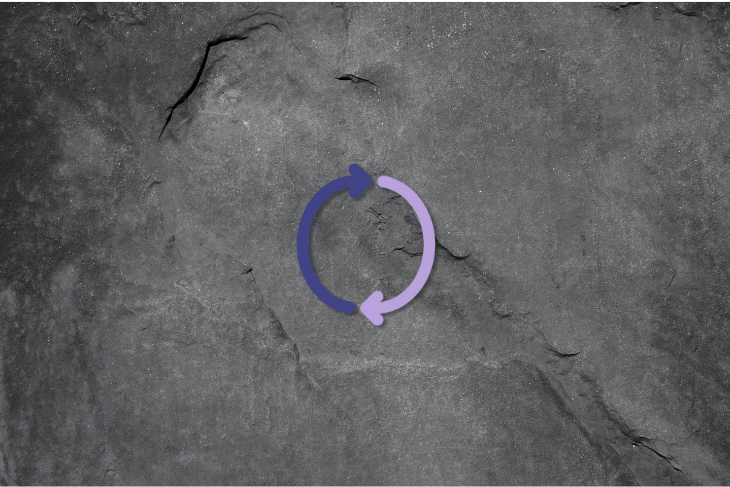
A couple of days ago I went to buy furniture from Ikea and the salesperson drew a prototype of the product I imagined within a minute. I shared information about my room and he updated the prototype until we created the perfect match.
Even when buying furniture you can experience the iterative process by:
- Analyzing the products and selecting the category you need
- Sharing your expectations about the selected category
- Letting a responsible person analyze the technical availability
- Prioritizing need according to product capability
- Sharing your feedback on the implemented prototype version
- Evaluating the product and using it until you find additional areas of improvement
As a product manager, iteration means “not forcing the team to over-engineer, learning from the latest iteration, and achieving better results for later version of your product”
In this article, you will learn what the iterative process is, how it differs from continuous improvement, as well as the steps to implement the iterative process on its own.
What is the iterative process?
The iterative process is a set of actions consisting of analysis, planning, design, implementation, testing, and review. This involves a continuous product improvement process of: try, learn and improve again. The main idea is to minimize the effort required for research, development, and implementation.
By dividing the process into smaller pieces, you can optimize your product and see customer results fast. The goal is to force yourself to reduce risk, manage efficiently, and create a flexible work environment.
The iterative process can be implemented into any working method, but as I mentioned, is an integral part of the agile methodology .
What is continuous product improvement?
There’s no end to product improvement. You should divide features into small changes and prioritize the ones that will create the biggest impact. Your aim is to get a significant impact with small efforts.
The continuous improvement method originated in Japan and is also known as Kaizen. Your operational excellence team can use the method to improve the operational side of the business.
The method forces managers to interrogate every feature until they become basic ones. You can implement continuous improvement methods into your organization if you are using lean , Kanban , Six Sigma, or agile.
Continuous improvement vs. iterative process
Most agile companies use continuous improvement and the iterative process together in tandem. After a while, people can think the two processes are the same, but there is a difference between them.
The iterative process doesn’t force you to develop primitive capabilities all the time. You have room to iterate features and create a better version of it. On the contrary, continuous improvement tends to optimize and delay resource usage as late as possible.
The iterative process is a feedback loop based on re-analyzing and improving the product according to new data or customer feedback. The product becomes better through trial and error.
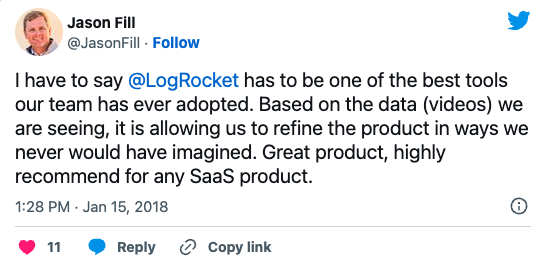
Over 200k developers and product managers use LogRocket to create better digital experiences
Continuous improvement is also called incremental design or development. With continuous improvement, you prioritize the most valuable features first and deliver packages as quickly as possible.
If you use an iterative process in the correct way, you continuously improve your product with deliverable parts. And if you are using continuous improvement in a correct way, you listen to feedback and respond to needs in an iterative way:
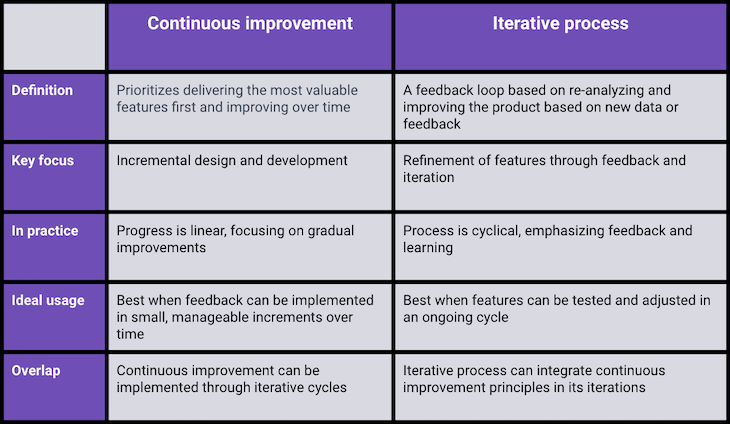
Why are we iterating the process?
The problem with non-iterative processes is that they don’t allow you to change course.
Before agile methodologies, PMs relied on waterfall methodologies, which were non-iterative processes. You divided projects into phases and after every phase was completed you started a new one. As waterfall requires, you planned your resources according to projects and wouldn’t change anything until the project was completed.
Technology companies aren’t suited to work with a fixed model. Markets can change in a minute, causing everything you build to be worthless before launch. Iterative and continuous methods offer flexibility and agile structures to ensure you don’t miss any opportunities.
In a waterfall method, a tiny requirement change causes a huge cost to rebuild and deliver. Tech companies prefer iterative processes because of their cost effectiveness. Rather than thinking about the project as a whole, thinking smaller parts at a time, helps the team to be more creative.
Iterating the process lowers the risk in many ways. Think of a waterfall project with a six months development duration. After a project is completed you would develop everything at once and if one feature has a problem you need to check everything at the same time.
Even if everything goes perfectly, you can see that the feature isn’t to customers expectations. To avoid such risks, ask for customer feedback in early stages. Finding the problem earlier is more efficient, cost effective, and also increases your customer’s happiness.
In some cases, product managers have a lack of information and data to provide a full flow. The PM and the team can provide a prototype to gauge customer reactions and usage data. While the product is in the development phase, you will have a chance to reshape your product and launch with better results.
Additionally, customers are more happy with the iterative process because they can get improvements earlier. There’s no need to wait six more months for a tiny upgrade. This method helps you to have clear communication with customers and encourage them to provide feedback.
The steps of an iterative process
The iterative process starts from product ideation and continues as a software development life cycle. The steps are as follows:
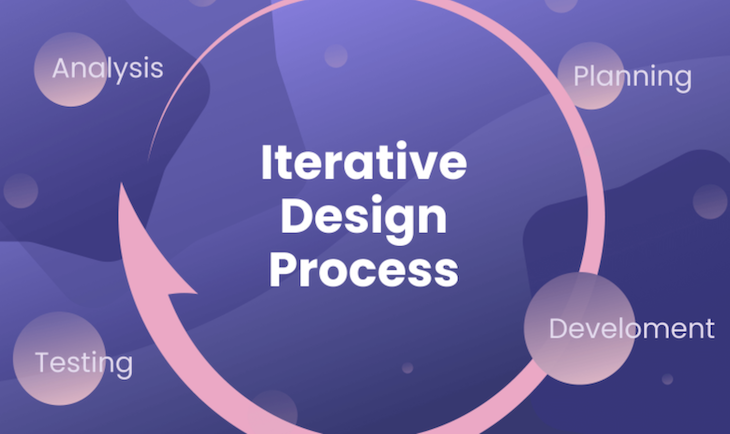
- Development
1. Analysis
Analysis is important to eliminate risk factors before starting to implement features. You need to analyze the product market and understand customer pain points. As a product manager, you convert the customer needs into technical requirements in this phase.
Determine high level requirements and possible solutions for the product with the development team. You can arrange a brainstorming or an event storming activity for the software team to have more ownership of the product.
2. Planning
Choose the scope and your product objectives. The scope contains the features that provide the most value to the product according to your forecasts. Prepare the requirement set and discuss value propositions of requests.
The iterations should be planned according to customer expectations, and must have capabilities so that you don’t lose customers.
3. Development
The development team starts to prepare the implementation of the first iteration after the planning phase. Your role here is to make sure everything goes as expected. Answer the development teams’ and customers’ questions as needed.
Testing methods can differ according to the features you deliver and your company policies. After QA approval, you should test the iteration before deployment. Demo sessions can be arranged with business teams and customers to show off the product and collect feedback for later iterations.
How to conduct a successful iterative process
As a PM, the first thing you should consider is your customer base. Arrange iterations according to customer expectations, feedback, and value propositions.
For example, if you want to see if a feature will create an impact or not, you can easily create a prototype iteration and ask customers for feedback. There’s no need for a full set of features, a simple capability will show you the result.
Create a continuous feedback loop with your customers. For B2C products it is easy to implement, because you have app stores, comment and support operations.
You should answer messages because entries without an answer may create a bad impression. Each customer will have a different perspective for the product and your prioritization mechanism will be based on the amount of customer requests.
You should be as flexible as you can. Nobody can insist on developing a feature if they see the previous iteration metrics. The data you collect will help you determine whether a feature has value.
Learn from each mistake. You can host “retro” meetings after every iteration process, where the business team, customers, integrated teams, and anyone else can enter a comment to discuss potential failures.
You can not be successful if you ignore the mistakes you made on an iteration. Add lessons learned pages into your product/project documentations, so that everyone can see them while iterations are on going.
Final thoughts
Before concluding, I want to leave you with the SMART approach. Agile processes offer less for analyzing and defining requests, so you should be as SMART as possible. SMART stands for:
These five bullets are practically a summary for the iterative processes. You need to set robust goals to achieve within a short time range and you need to impress customers with prototype’s of features.
Focusing on SMART goals will help you focus on little pieces of the puzzle, instead of trying to do everything at once. As a result, you will achieve your iterations, while making it easier to review your goals.
Try to be more specific instead of perfect. Leave room for creativity and improvements.
Featured image source: IconScout
LogRocket generates product insights that lead to meaningful action
Get your teams on the same page — try LogRocket today.
Share this:
- Click to share on Twitter (Opens in new window)
- Click to share on Reddit (Opens in new window)
- Click to share on LinkedIn (Opens in new window)
- Click to share on Facebook (Opens in new window)
- #agile and scrum
- #collaboration and communication

Stop guessing about your digital experience with LogRocket
Recent posts:.
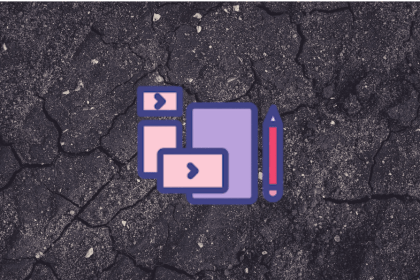
An overview of product platforms
A product platform is a shared set of technology, procedures, and components that allows the development of a set of related products.

Leader Spotlight: Illustrating value and gaining trust, with Jarrad Lokes
Jarrad Lokes, Director of Digital Product Management at Trupanion, shares how trust is an artifact of the transparency and value you provide.
Using the power and interest grid for stakeholder management
To help demystify stakeholder management, you can use tools that introduce a structured approach for your product team.

A guide to RACI vs. RAPID vs. RASIC
Role-definition frameworks like RACI, RAPID, and RASIC take a structured approach to assigning roles and clarifying accountability.

Leave a Reply Cancel reply

IMAGES
VIDEO